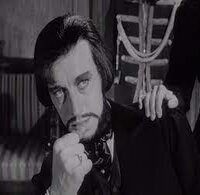0
















| Thumbs Up |
| Received: 72 Given: 1,261 |

The English face typically leans towards the narrower side of things, or at least it is slightly narrower than the European average of 140 mm. Details aren't fantastic, but the most valid source we have concerns the metric measurements undertaken on approximately 2,000 English criminals in the 1930s; a bizygomatic width of 136.5 mm was extracted from this study. However, we have another source from the more obscure English anthropologist, Frederick G. Parsons, who in 1918 undertook a series of metric measurements on wounded German POWs in southern England, so he could then compare their measurements to the 'native' soldiers to surmise if there was an apparent morphological difference in face (and head) shape between the two groups. The German POWs (nearly 800 of which were measured) averaged a bizygomatic width of 140 mm, whilst the English (and he specified that they were either of fully or mostly English ancestry) soldiers averaged 135 mm.
In other words, the English bizygomatic width is 135-137 territory. However, the English skull is certainly not narrow on average, hovering around the 154 mm mark and that is something I have noticed, that the English seldom have narrow skulls even though they are a predominantly Nordid (KN or Hallstatt proper) population in all other regards. In this regard, it is interesting to look at the three groups that caused the ethnogenesis of the English population; the Anglo-Saxons, the 'native' Britons, and the (recently discovered in this context) Franks. It seems hard to argue against the notion that this 'French' component came to England as a result of the good relations the Anglo-Saxons had with their Germanic-speaking brethren across the Channel. Thus, it concerns a series of gradual migrations over an approximately 500-year period from 500 to 1000 AD, this period coinciding with the zenith of the Anglo-Saxons. This more 'gradual' series of migrations across the Channel did assist in replacing 75% of the Brythonic population in southern and eastern England; it was seismic.
However, concerning the modern-day metric makeup of the English, I don't think we can subscribe the width of the skull to this 'French' aspect; it appears that the Franks were more mesocephalic than the modern-day (largely brachycephalic) French population.
Token brought to my attention metric research done on a series of skulls from graveyards in England. One Berkshire graveyard originating from the earliest days of the Anglo-Saxon period had 20 skulls from its confines measured; 8 of which had been male. All of the male skulls represented a dolichocephalic 'Saxon' type, whilst all but one of the women were of a 'brachycephalic' type. The sole dolichocephalic female was buried in a different way to the others as well; no doubt she was of 'Saxon' origin. Considering how early this is, there is no doubt all of the brachycephalic women are of Brythonic origin, but yet the modern-day English seemingly have broader skulls (by a negligible amount) than the Welsh. However, there is no denying that the Welsh (no doubt the Brythonic peoples in what is now England would have been pretty indistinguishable from the modern-day Welsh) are 'broader' in most regards than the English. One can see that with their own eyes, as well as the fact that the Anthropologist, D. MacKintosh in his book Results of Ethnological Observations Made during the Last Ten Years in England and Wales identified there being a 'dominant Welsh' type, one that was beset with broad cheekbones (although interestingly enough he also mentioned it as being beset with a broad head). It's the same for the Scottish as well; they have broader faces on average than the English, but the average width of a Scottish skull is still marginally lower than the English one.
One can wonder whether all of this is down to the possibility that the Brythonic population in what is now England was more brachycephalic than those in what is now Wales or southern Scotland.














| Thumbs Up |
| Received: 72 Given: 1,261 |

Ofc, in a Scottish context, the 'Brythonic' component only concerns the south which is still significant. The SW of Scotland undoubtedly encompassed a population of mixed Gaelic-Brythonic admixture (Galloway being the epicentre), but the rest of the south was mainly Brythonic (with some Anglian admixture); northern Scots were Gaelo-Pict. However, at the end of the day, the Gaels, Britons, and Picts were/all very closely related groups, deriving the vast majority of their ancestry from the Bell Beaker migrations, more than any other peoples in Europe.


















| Thumbs Up |
| Received: 11,519 Given: 8,746 |

So much to read, but what is the question?














| Thumbs Up |
| Received: 72 Given: 1,261 |
There are currently 1 users browsing this thread. (0 members and 1 guests)
Bookmarks